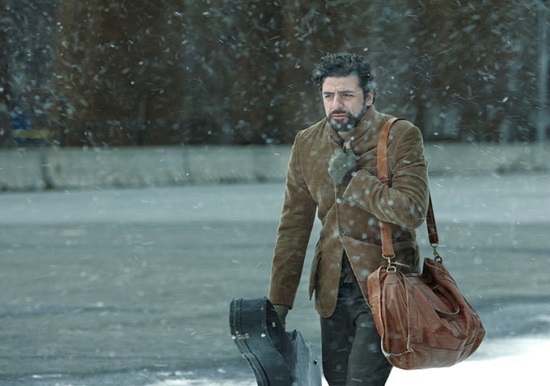Films about musicians often end on a climactic moment – a battle of the bands to be won, personal adversity to be overcome, true love to be conveniently found – before a happily ever after life and career is secured, that is if they don’t end in tragedy and death. Walk the Line may end with Johhny Cash’s legendary concert at Folsom prison, and his proposal to love of his life June Carter, but you could get a good few films worth of material out of the darkness and struggle that would follow on from that point of his life; the relapses into addiction, the fall into obscurity in the 1980’s, and the heart-warming late life career resurgence.
These sorts of music biopics tend to feel reductive and dishonest, with their insistence that one dramatic moment of triumph is the crux of an entire life that follows. A successful musical career doesn’t fall neatly into a three act structure and this futher ignores the reality that for every one musician that makes it, there will be hundreds that fall by the wayside, many of them with equal talent. Making an honest living off of your creative endeavours often has more to do with pure luck and the vagaries of fate, then the rewarding of hard work and recognition of ability.
With that in mind, the almost always excellent Coen brothers masterfully tackle the casual tragedy and hubris of the journeyman musician in their latest film, Inside Llewyn Davis, set in the seminal Greenwich Village folk scene of 1961. It’s a fitting subject matter for the singular directors considering their work’s constant and obsessive thematic focus on the inscrutability of fate, and plots of simple people feeling that that they’re automatically owed more from the universe setting out to address the discrepancy. In the Coen’s world such –very human- entitlement is usually met by harsh and bloody karmic retribution. Thinking you deserve an illicitly gotten suitcase full of money isn’t all that different from thinking a successful musical career and artistic recognition is your God-given right. Saying that, the latter is far less likely to end in murder and Llewyn Davis… may in fact be the first Coen film to feature no onscreen deaths.
It stars Oscar Issac as the titular Llewyn Davis, who also impressively performs all of his character’s music in a sure to be star making turn. The film is loosely based on the memoirs of Dave Van Ronk, a folk purist and elder statesman of the Greenwich scene, who is perhaps most famous for taking a young Bob Dylan under his wing. Llewn Davis is clearly an original creation, despite sharing some of Van Ronk’s repertoire and some of the anecdotal experiences from his memoir. Van Ronk gained far more success and respect than Llewyn ever will even in his early days, and by all accounts wasn’t nearly as big an asshole as Davis is. This fictionalisation has the effect of making Llewyn Davis’s struggle feel far more real than any rote biopic ever could, working as Werner Herzog style “ecstatic truth” (If this was a Coen film I’d be due some Barton Fink style punishment for writing that line about now).
Llewyn Davis himself is a three dimensional creation; sarcastic, conceited, inconsiderate, highly judgemental of the choices of others, endlessly dismissive and jealous of fellow musicians, self-sabotaging, manipulative, and yet despite his many flaws he still manages to somehow remain sympathetic. His extreme poverty and homelessness excuse much of his behaviour, and there are suggestions that all of his irascible tendencies are a sardonic fig leaf for profound depression; plus there’s a charm to Oscar Issac’s portrayal of this otherwise charmless man that you can’t help but warm to.
Plot-wise this is a meandering picaresque affair, full of incidence and encounter, but little forward direction, in fitting with the hopeless subject matter. Despite this the story never feels pointless. This is a melancholic, lyrical film, interspersed by bursts of bone-dry hilarity, and moments of haunting quasi-surreal profundity. It’s certainly the most subdued and restrained work of the Coens’ career but it never feels shorn of their usual bite, and it remains utterly entrancing throughout its runtime.
Highlights include Carrey Mulligan playing against type as an endlessly profane and angry fellow folk musician and sometime lover of Llewyn; a joyous and hilarious recording session of a deeply inane novelty song that makes brilliant use of Girls actor Adam Driver’s natural oddity; and a nightmarish road trip in the company of John Goodman as a monstrous old Jazz musician and Garrett Hedlund as his near mute beatnik manservant. The misplaced cat of Llewyn’s middle aged academic benefactors is the most important plot point in the film, one laced with poignant yet inscrutable symbolism, which says everything you need to know about the kind of film Llewyn Davis is.
It’s as aesthetically gorgeous as you would come to expect from the Coens, and Bruno Delbonnel does a bang up job standing in for their usual cinematographer Roger Deakins. A sense of dispiriting cold pervades the muted images of New York in the winter of 1961 and the narrow stairwells and corridors of the Greenwhich apartments Llewyn crashes in take on surreal and vaguely sinister qualities. The whole film is doused in a subtle nostalgic glow that feels less like a time capsule, and more like staring too long at the cover of The Freewheelin’ Bob Dylan and stepping directly into the photograph. Indeed the Coens have admitted in interviews that Dylan’s iconic cover art was a key reference for the look of the film.
The music, produced by T Bone Burnett who collaborated with the Coens on The Oh, Brother Where Art Thou soundtrack, is as period authentic and well executed as you would hope, especially the brilliant skewering of 60’s novelty songs. But what sticks most are Oscar Issac’s musical performances, which show that for all his faults Davis is a man who cares passionately about his art. There’s also some finely subtle character work in Llewyn’s at times perversely self-defeating song selection.
Inside Llewyn Davis shows care, meticulous detail, and passion for its early 60’s setting, but the film is not a congratulatory and sentimental nostalgia-fest dutifully ticking off references for folk geeks. The Coens’ usual natural scepticism is on constant display. Llewyn Davis… de-romanticises the Greenwich folk scene and shows it full of the same disappointments and petty details that fill up the rest of human life. The road trip section does the same trick for Kerouac and the Beats’ romanticism of the road; highlighting that travelling for hour upon hour with self-important beatniks and crazed jazz musicians through the endlessly repeating flat scenery of the American road would be just as awful as you’d logically expect.
The Coens’ work always reveals new detail and depth on repeat viewings, but sitting through Inside Llewyn Davis once is enough to confirm that it stands in the top tier of the Coens’ vast and excellent filmography. It’s a melancholic, mysterious, often hilarious film that evokes all sorts of deeper questions about art, commercialism, life, and fate, while continuing their more explicit post No Country for Old Men trend of avoiding pat narrative resolutions. For filmmakers ever accused of sadism towards their creations, this tale of an arrogant, go nowhere folk musician is by far their most humane.
Inside Llewyn Davis is in cinemas now



